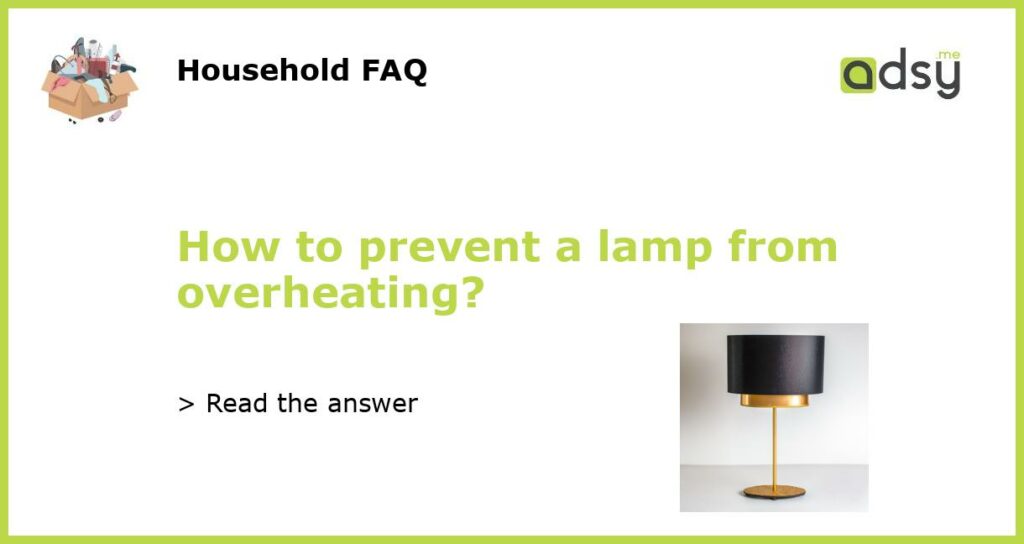Understanding the Problem of Overheating Lamps
It’s not uncommon for lamps to overheat, sometimes to a dangerous level that could lead to fires. It’s a problem that mostly affects halogen and incandescent bulbs, but it can also happen with LED lights in certain situations. Overheating can cause damage to the fixture and shorten the lifespan of the bulb, among other consequences.
Identifying the Causes of Overheating
A lamp can overheat due to several reasons, including wattage exceeding the maximum recommended level, a bulb not fitting correctly, and dust accumulation. In some cases, overheating happens because the bulb emits too much heat, and the fixture doesn’t have adequate ventilation. It’s also common to see overheating when the bulb is covered by a shade or other material that traps the heat.
Preventing Overheating in Lamps
There are several steps you can take to prevent your lamp from overheating. First, make sure to use the right bulb wattage as recommended by the manufacturer. If your lamp doesn’t have enough ventilation, consider using a lower wattage bulb or a different type of bulb that emits less heat. Always ensure that your bulb is properly seated and doesn’t touch any of the surrounding materials.
Clean your lamp regularly to remove any dust accumulation, particularly around the bulb. This can help improve ventilation and reduce the risk of overheating. If you use a shade or cover on your lamp, opt for materials that are heat-resistant and have good airflow. You can also try leaving the shade off altogether to improve ventilation.
Additional Tips for Lamp Safety
Aside from preventing overheating, there are other things you can do to ensure the safety of your lamps. Always follow the manufacturer’s instructions when it comes to installation, maintenance, and use of your lamp. If your lamp uses a dimmer switch, make sure the bulb is compatible with the switch and dimmer.
Don’t leave a lamp unattended for extended periods, especially if it’s an older fixture. Keep flammable materials away from lamps, and avoid placing them in areas with high foot traffic where they could be accidentally knocked over. Regularly check cords and plugs for damage, and never use a lamp with worn or frayed electrical components.
When to Call a Professional
If you notice persistent overheating, unusual smells, buzzing or crackling noises, or other signs of electrical problems, turn off the lamp and disconnect it from the power source immediately. Don’t attempt to fix the issue yourself. Call a licensed electrician or the lamp manufacturer for assistance. This can help prevent the risk of fires, electric shock, or other hazards.






